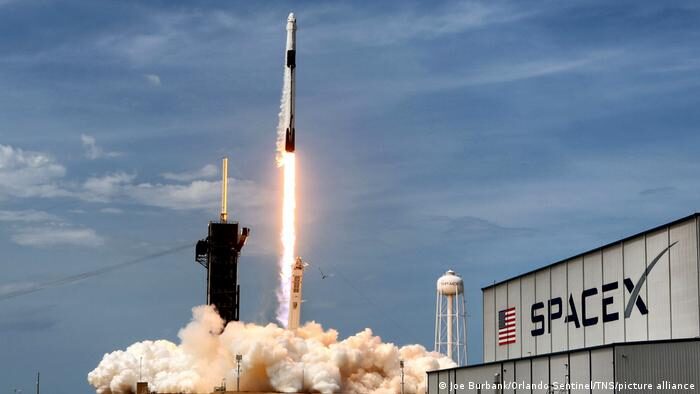- SpaceX launched 21 Starlink satellites on April 12, 2025, from Kennedy Space Center.
- Thirteen satellites feature Direct-to-Cell technology to eliminate cellular dead zones.
- The Falcon 9 rocket’s reusable booster successfully landed on a drone ship in the Atlantic Ocean.
- This marks SpaceX’s 42nd Falcon 9 mission of the year, with 28 dedicated to Starlink launches.
- Starlink’s satellite constellation now exceeds 7,000 units, providing global internet coverage.
SpaceX Launches 21 Starlink Satellites to Expand Global Internet Network
SpaceX successfully launched 21 Starlink satellites into low Earth orbit (LEO) on Saturday, April 12, 2025. The mission, designated Starlink 12-17, lifted off at 8:53 p.m. EDT (0053 GMT on April 13) from Kennedy Space Center’s historic Launch Complex 39A in Florida. This launch further bolsters SpaceX’s growing satellite constellation, which aims to provide high-speed internet access across the globe.
Thirteen Satellites Equipped with Direct-to-Cell Technology
Among the 21 satellites deployed, 13 are equipped with SpaceX’s innovative Direct-to-Cell technology. This feature is designed to eliminate cellular dead zones by enabling mobile devices to connect directly to satellites. In the United States, SpaceX has partnered with T-Mobile to bring this capability to its customers. The technology promises to revolutionize mobile connectivity, particularly in remote and underserved areas.
Falcon 9 Booster Achieves Successful Landing
The Falcon 9 rocket’s first stage, designated B1083, performed a flawless mission. Approximately 2.5 minutes after liftoff, the booster separated from the rocket’s upper stage, which continued its journey to deploy the satellites. About six minutes later, B1083 executed a landing burn and safely touched down on SpaceX’s drone ship, A Shortfall of Gravitas, stationed in the Atlantic Ocean. This marked the booster’s 10th successful flight and recovery, highlighting SpaceX’s commitment to reusability and cost efficiency in space exploration.
Starlink Constellation Grows Beyond 7,000 Satellites
With this latest mission, SpaceX’s Starlink network now comprises more than 7,000 satellites. Operating in a grid-like formation, the constellation provides low-latency, high-speed internet to nearly every corner of the planet, excluding polar regions. The network’s rapid expansion underscores SpaceX’s ambition to bridge the digital divide and offer reliable internet access to underserved communities worldwide.
Mission Timeline and Launch Highlights
The countdown to launch was meticulously executed, with key milestones including propellant loading, engine chill procedures, and final system checks. Spectators at Florida’s Space Coast were treated to a stunning visual display as the Falcon 9 rocket ascended against the backdrop of a full moon. The launch webcast, hosted on SpaceX’s social media platforms, provided real-time updates and insights into the mission.
Approximately one hour after liftoff, the 21 Starlink satellites were deployed into their initial orbits. Each satellite will now maneuver into its designated position within the constellation, ensuring optimal coverage and performance.
SpaceX’s 42nd Falcon 9 Mission of 2025
The Starlink 12-17 mission marks SpaceX’s 42nd Falcon 9 launch of the year, with 28 of these dedicated to expanding the Starlink network. This impressive launch cadence demonstrates SpaceX’s operational efficiency and its pivotal role in advancing commercial spaceflight capabilities.
Looking Ahead: The Future of Starlink
As SpaceX continues to enhance its Starlink network, the company remains focused on addressing regulatory challenges and securing partnerships to expand its market reach. The integration of Direct-to-Cell technology is expected to attract new customers and solidify Starlink’s position as a leader in satellite-based internet services.
With plans for additional launches in the coming weeks, SpaceX is on track to further increase the capacity and reliability of its global internet network. The company’s innovative approach to satellite deployment and reusability sets a new standard for the aerospace industry, paving the way for a more connected world.
SpaceX, Starlink, satellite internet, Falcon 9, Direct-to-Cell

